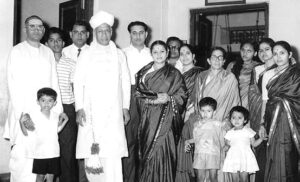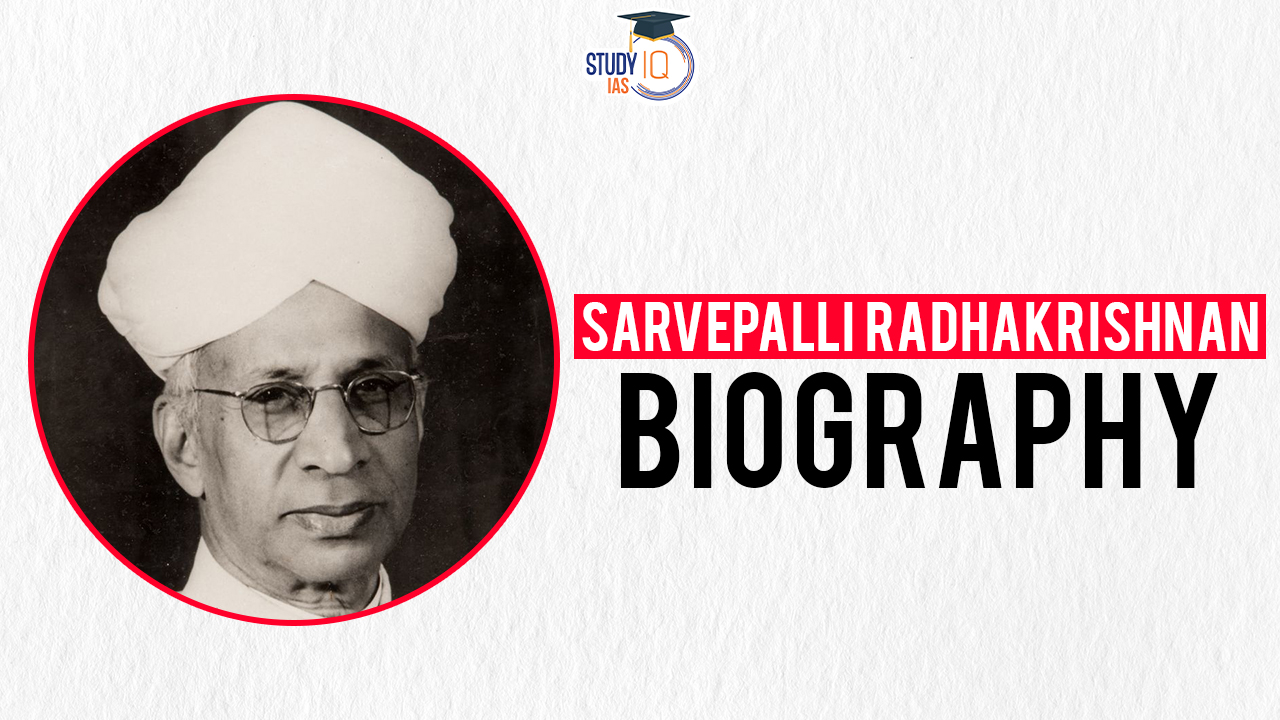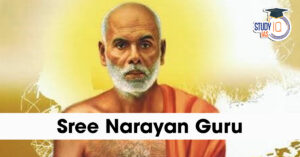Table of Contents
Sarvepalli Radhakrishnan: Dr Sarvepalli Radhakrishnan was an Indian politician, philosopher, and statesman who served as the second president of India from 1962 to 1967. He previously served as the first vice president of India from 1952 to 1962. He was the second ambassador of India to the Soviet Union from 1949 to 1952.
Dr. Sarvepalli Radhakrishnan’s Birth Anniversary
Dr. Sarvepalli Radhakrishnan’s birth anniversary is celebrated on September 5 every year. This day marks Teachers’ Day in India, a tribute to his immense contributions as a teacher, philosopher, and statesman. Born in 1888, Radhakrishnan was not only a prominent academic but also served as the second President of India from 1962 to 1967.
The idea of celebrating Teachers’ Day on his birthday came from Dr. Radhakrishnan himself. When his students and friends wanted to celebrate his birthday, he suggested that it would be more meaningful to honor teachers nationwide on this day. Since then, his birth anniversary has become a day of gratitude and respect for educators across the country.
Sarvepalli Radhakrishnan
Dr Sarvepalli Radhakrishnan was an Indian statesman, philosopher, politician, and academic. He was India’s second President and first Vice President. As a writer, Radhakrishnan dedicated his life to elucidating, defending, and promoting his religion, which he variously referred to as Hinduism, Vedanta, and the religion of the Spirit. He aimed to demonstrate the intellectual and ethical viability of Hinduism.
He frequently exhibits comfort with both Indian and Western intellectual settings, and his writing frequently incorporates both Western and Indian sources. As a result, Radhakrishnan has gained praise in academic circles as a representation of Hinduism in the West.
Check here the Role of Education in society and the Role of teachers in students’ lives in different aspects.
Sarvepalli Radhakrishnan History
- Born: September 5, 1888, in Tamil Nadu, India.
- Education: Studied philosophy at Madras Christian College.
- Academic Career:
- Lecturer at Madras Presidency College and University of Mysore.
- Professor of Philosophy at the University of Calcutta.
- Held the prestigious Spalding Chair of Eastern Religions and Ethics at Oxford (1936–1952).
- Renowned for works on Indian philosophy and comparative religion.
- Notable Works:
- “Indian Philosophy”
- “The Hindu View of Life”
- “The Principal Upanishads”
- Political Career:
- India’s Ambassador to the Soviet Union (1949–1952).
- First Vice President of India (1952–1962).
- Second President of India (1962–1967).
- Teachers’ Day: His birthday, September 5, is celebrated as Teachers’ Day in India.
- Philosophy: Advocate of Advaita Vedanta; emphasized humanism, tolerance, and secularism.
- Awards: Received the Bharat Ratna in 1954.
- Death: Passed away on April 17, 1975.
Who is Dr. Sarvepalli Radhakrishnan?
Dr Sarvepalli Radhakrishnan a leader, politician, philosopher, and academic from India, . He first served as India’s vice president before becoming the nation’s second president. Writing about, defending, and promoting his beliefs—which he referred to as Hinduism, Vedanta, and the religion of the Spirit—was Radhakrishnan’s life’s work. He made an effort to show how his Hinduism was both morally and intellectually sound. His prose contains both Western and Indian components, and he seems at home in both Indian and Western intellectual traditions. As a result, Radhakrishnan has received appreciation in academic circles as a representation of Hinduism in the West.
| Category | Details |
|---|---|
| Full Name | Sarvepalli Radhakrishnan |
| Date of Birth | September 5, 1888 |
| Place of Birth | Tiruttani, Madras Presidency, British India (now Tamil Nadu, India) |
| Date of Death | April 17, 1975 |
| Education |
|
| Academic Career |
|
| Political Career |
|
| Philosophical Contributions |
|
| Awards and Honors |
|
Atal Bihari Vajpayee Biography
Sarvepalli Radhakrishnan’s Early Life
Sarvepalli Radhakrishnan was born on September 5th, 1888. He was born into a Telugu-speaking Niyogi Brahmin family in Tiruttani, Madras Presidency, British India, which is now Tamil Nadu, India. His mother’s name was Sarvepalli Sita, and his father was Sarvepalli Veeraswami, a subordinate revenue official working for a local zamindar. His family originates from Sarvepalli village in Andhra Pradesh’s Nellore district. He was raised in the cities of Thiruttani and Tirupati. Radhakrishnan received a number of scholarships throughout his academic career.
| Facts about Dr Sarvepalli Radhakrishnan | |
| Born | 05/09/88 |
| Religion | Hinduism |
| Place of Birth | Thiruttani, Madras Presidency, British India (now in Tamil Nadu, India) |
| Nationality | Indian |
| Father | Sarvepalli Veeraswami |
| Mother | Sitamma |
| Died | 17 April 1975 (aged 86) Madras (now Chennai), Tamil Nadu, India |
| Spouse Name | Sivakamu, Lady Radhakrishnan |
| Chidren | Five daughters and One son |
| Education |
|
Sarvepalli Radhakrishnan Education
- He studied in Thiruttani’s K.V. High School for his primary education.
- He transferred to the Government High Secondary School in Walajapet and the Hermannsburg Evangelical Lutheran Mission School in Tirupati in 1896.
- He registered at Vellore’s Voorhees College to complete his high school education.
- After completing First of Arts, he applied to Madras Christian at the age of 17.
- In 1906, he obtained both a bachelor’s and a master’s degree from the same college.
- “The Ethics of the Vedanta and its Metaphysical Presuppositions,” Sarvepalli wrote for his bachelor’s degree thesis. It was created in reaction to the charge that the Vedanta philosophy disregarded ethics.
- Two of Radhakrishnan’s teachers, Rev. William Meston and Dr. Alfred George Hogg, gave his dissertation high marks. His thesis was published when Radhakrishnan was barely twenty years old.
Sarvepalli Radhakrishnan Family
At the age of 16, Sivakamu and Sarvepalli Radhakrishnan were wed. Radha Krishnan’s distant relative Sivakamu was born. For more than 51 years, Radhakrishnan and Sivakamu were a happy couple. Five daughters and one son were among Radhakrishnan’s six offspring. His son, the eminent historian Sarvepalli Gopal, was an Indian. He wrote the biographies of Jawaharlal Nehru and his father, Radhakrishnan: A Biography.

S. Radhakrishnan Academic Career
- 1909: Appointed to the philosophy department at Madras Presidency College.
- Mysore Period: Lectured at Maharaja’s College, Mysore; became Professor of Philosophy at the University of Mysore in 1918.
- Publications: Contributed to notable journals like The Quest, Journal of Philosophy, and International Journal of Ethics.
- First Book (1918): Published Rabindranath Tagore’s Philosophy, which he described as “the genuine expression of the Indian spirit.”
- Second Book (1920): Released The Reign of Religion in Contemporary Philosophy.
- 1921: Appointed Professor of Philosophy at the University of Calcutta, holding the King George V Chair of Mental and Moral Science.
- 1926: Represented the University of Calcutta at the British Empire Universities Congress and attended the International Congress of Philosophy at Harvard.
- 1929: Delivered the Hibbert Lecture on “The Ideals of Life” at Manchester College, Oxford; later published as An Idealist View of Life.
- 1929: Invited to Manchester College, Oxford, to teach comparative religion.
- 1931: Knighted by George V for contributions to education; stopped using the title post-Indian independence, opting for “Doctor.”
- 1931–1936: Served as Vice-Chancellor of Andhra University.
- 1936: Selected as Fellow of All Souls College and appointed Spalding Professor of Eastern Religions and Ethics at Oxford University.
- 1937: Nominated for the Nobel Prize in Literature (nominations continued through the 1960s).
- 1939–1948: Took over as Vice-Chancellor of Banaras Hindu University (BHU), succeeding Pt. Madan Mohan Malaviya.
S. Radhakrishnan Political Career
Radhakrishnan started his political career later in life after an academic career that showed promise. After his international influence, he began his political career. His support for renaming the Ceded Districts division of the Madras Presidency Rayalaseema came from his attendance at the Andhra Mahasabha in 1928. He was nominated to the League of Nations Committee for Intellectual Cooperation in 1931, where he rose to prominence as a Hindu authority on Indian thought and a persuasive interpreter of the significance of Eastern institutions in modern society in the eyes of the West. After India’s independence, Radhakrishnan became increasingly involved in both domestic and international politics.
From 1946 to 1951, Radhakrishnan served as the chairman of the Indian delegation and sat on the Executive Board of the newly established UNESCO. In the two years that followed India’s independence, Radhakrishnan also served in the Indian Constituent Assembly. Radhakrishnan had to strike a balance between the demands of the University Commission and his ongoing duties as the Spalding Professor at Oxford and his commitments to UNESCO and the Constituent Assembly. When the Universities Commission’s report was finished in 1949, Radhakrishnan was chosen to serve as India’s ambassador to Moscow by Jawaharlal Nehru, who was the country’s prime minister at the time.
He kept this position until 1952. Radhakrishnan was able to put his philosophical and political convictions into action when he was elected to the Rajya Sabha. Radhakrishnan was chosen as India’s first vice president in 1952, and he was chosen as the nation’s second president in 1962. Radhakrishnan observed a growing demand for world peace and intergroup harmony while he was in government. Radhakrishnan was made acutely aware of the significance of this need as he watched many world crises develop. When he was appointed Vice President, the Korean War had already begun.
Political disputes with China in the early 1960s, followed by hostilities between India and Pakistan, dominated Radhakrishnan’s administration. As a result of the Cold War’s division of East and West, both are on the defensive and distrustful of one another. Radhakrishnan questioned the polarising potential and domineering nature of what he perceived to be self-proclaimed international groups like the League of Nations. Instead, he argued for the advancement of an original internationalism that put a special emphasis on the metaphysical underpinnings of holistic experience. Only then will tolerance and respect for other cultures and nations be promoted.
Radha Krishnan Philosophical Thoughts
By defending Hinduism from misinformed Western criticism and incorporating Western intellectual and religious ideals, Radhakrishnan sought to meld Eastern and Western ideas.
One of the most effective spokespersons for Neo-most Vedanta was Radhakrishnan. Although he reworked Advaita Vedanta for a contemporary audience, his metaphysics was based on it. He was aware of the goodness and variety of human nature, which he believed to be supported by and founded in the ultimate, or Brahman.
For Radhakrishnan, theology and creeds are both intellectual formulations and representations of religious experience or intuitive beliefs. Advaita Vedanta received the highest rating from Radhakrishnan when it came to how each religion interpreted religious experience.
Radhakrishnan believed that Advaita Vedanta was the best representation of Hinduism since it was based on intuition as opposed to the intellectually mediated concepts of other religions.
Since Vedanta offers the most immediate intuitive experience and inner realisation, Radhakrishnan claims that it is the highest kind of religion. Radhakrishnan was critical of Western culture and philosophy despite his familiarity with it. He asserted that in spite of their assertions to the contrary, Western philosophers were inspired by religious ideas from their own culture.
Sarvepalli Radhakrishnan Death
On November 26, 1956, Radha Krishnan’s Sivakamu passed away. He was a widower until his death and never got married again. Radhakrishnan retired from public life in 1967. He lived in the home he created in Mylapore, Madras, during the final eight years of his life. The death of Radhakrishnan happened on April 17, 1975.
Dr. Sarvepalli Radhakrishnan
In 1954, Radhakrishnan received the Bharat Ratna, India’s highest civilian honour. For his contributions to education, King George V knighted him in 1931. In 1954, Germany awarded him the Pour le Mérite for Sciences and Arts in recognition of his achievements. He received the Sash First Class of the Order of the Aztec Eagle from Mexico in 1954 as a mark of honour.
In 1961, he received the German Book Trade Peace Prize. He was the first recipient of the Sahitya Akademi fellowship, the highest prize bestowed by the Sahitya Akademi on a writer, in 1968. In honour of Radhakrishnan’s conviction that educators should possess the best minds on the planet, India has observed Teacher’s Day on September 5 since 1962.
In 1963, the United Kingdom recognised him by inducting him into the Order of Merit. He received a record-breaking 27 nominations for the Nobel Prize. 11 times for the Nobel Peace Prize and 16 times in literature. He was chosen as a Fellow of the British Academy in 1938.
He was awarded the Templeton Prize in 1975 for advocating nonviolence and sharing a universal understanding of God that encompassed understanding and compassion for all people.
Sarvepalli Radhakrishnan’s Literary works
The following the literary works by Dr. Sarvepali Radhakrishan:-
- In 1931, King George V knighted him for his contributions to education.
- In 1954, Radhakrishnan received the highest civilian award in India, the Bharat Ratna, Germany recognised him by awarding him the Pour le Mérite for Sciences and Arts, and Mexico honours him by awarding him the Sash First Class of the Order of the Aztec Eagle.
- In 1961, he received the German Book Trade Peace Prize. He was the first recipient of the Sahitya Akademi fellowship, the highest prize bestowed by the Sahitya Akademi on a writer, in 1968.
- In honour of Radhakrishnan’s conviction that educators should possess the best minds on the planet, India has observed Teacher’s Day on September 5 since 1962.
- In 1963, the United Kingdom bestowed upon him the accolade of membership in the Order of Merit. He received a record-breaking 27 nominations for the Nobel Prize. 11 times for the Nobel Peace Prize and 16 times in literature. He was chosen as a Fellow of the British Academy in 1938.
- He was awarded the Templeton Prize in 1975 for advocating nonviolence and sharing a universal understanding of God that encompassed understanding and compassion for all people.
Sarvepalli Radhakrishnan UPSC
One of the most well-known and eminent Indian philosophers in academic circles of the 20th century was the academic, philosopher, and statesman Sarvepalli Radhakrishnan. Writing about, defending, and spreading his religion—which he variously referred to as Hinduism, Vedanta, and the religion of the Spirit—was the focus of Radhakrishnan’s whole life and literary career. He was well-known for his academic prowess and as a teacher rather than for being known as Radhakrishnan’s President.


 Savitribai Phule Biography, Early Life, ...
Savitribai Phule Biography, Early Life, ...
 Tansen Biography, Musical Legacy and Mas...
Tansen Biography, Musical Legacy and Mas...
 Sree Narayana Guru (1856–1928), Key Mo...
Sree Narayana Guru (1856–1928), Key Mo...





















